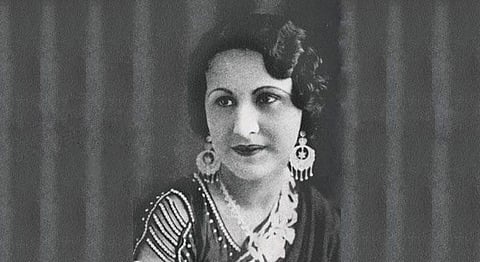
- HOMEGROWN WORLD
- #HGCREATORS
- #HGEXPLORE
- #HGVOICES
- #HGSHOP
- CAREERS
- ABOUT US
- CONTACT US

Bulbul-e-Paristan (1926) is, conforming to its title, a fantasy. A big-budget one, at that, with the sparkliest special effects the 1900s could offer. But what is particularly significant about this movie? It is the first Indian film directed by a woman – Fatma Begum, India’s very first female director.
The film industry is one of the many creative industries dominated by men – not just in India, but around the world. Crossing all odds, though, female directors have shattered glass ceilings for a while now – Patty Jenkins being the most recent, with her film Wonder Woman breaking all records with a $100.5 million debut. Mira Nair’s films have been critically acclaimed for years now, and her most recent Queen of Katwe (2016) won third place in the People’s Choice Award of the Toronto International Film Festival last year. Kathryn Bigelow’s ‘The Hurt Locker’ stunned the 2010 Academy Awards with 9 nominations and 6 awards, including that of Best Motion Picture of the Year. But almost a century ago, Fatma Begum seemed to have achieved the unthinkable.
The 1900s were a tough time for Indian film. Indian cinema was just about starting to establish itself as an entertainment medium, and the silent films of the 1800s were already being forgotten. For a woman to break into the industry, especially not just as an actor, was a feat of its own, and Fatma Begum broke all these barriers, fearlessly.
Fatma was born to a Muslim family in India in 1892. She studied theatre, and began working with Urdu theatre before moving onto the Indian film industry. She began her film career as an actress in Ardeshir Irani’s silent film Veer Abhimanyu (1922), after which her career skyrocketed – she was an extremely talented actress at a time in which it was the norm for men to play women in films. So naturally, she stood out, her fair skin and sharp features bright against the sepia movie screen.
Fatma didn’t just direct Bulbul-e-Paristan in 1926 – she wrote the entire screenplay, used her cinematic mastery of trick photography to create the fantasy she wished to portray on screen, and produced the film with the establishment of her production house, Fatma Films, the same year. It’s no surprise that she is often referenced as being one of the early pioneers of fantasy cinema.
She went on to direct a number of successful films, including Heer Ranjha (1928) and Shakuntala (1929).
Fatma played a significant role as an actor, producer, writer and director in Indian cinema for 16 long years, directing her last film, Goddess of Luck, in 1929. She died at 91, in 1983, having shattered norms of Indian cinema and opening infinite doors for Indian women in cinema for years to come.
We suggest you read:
